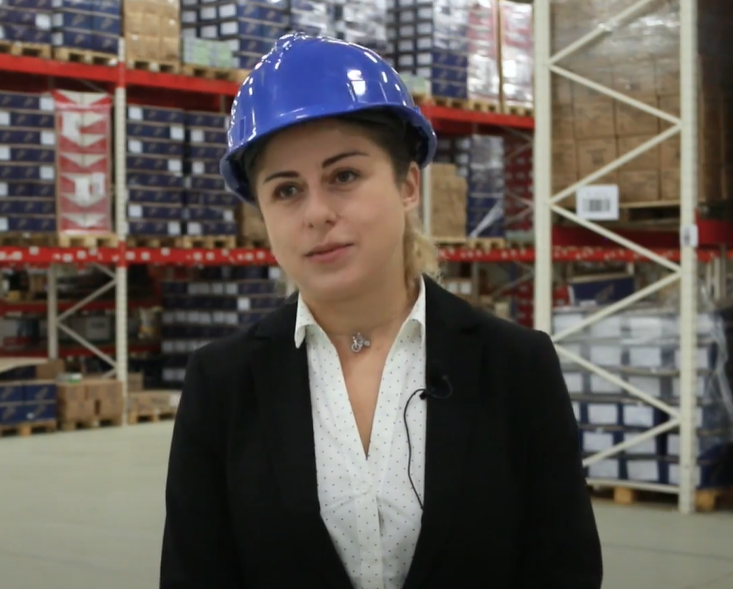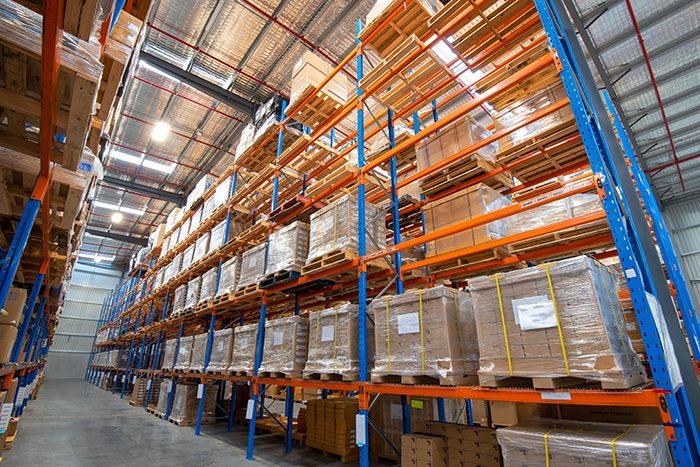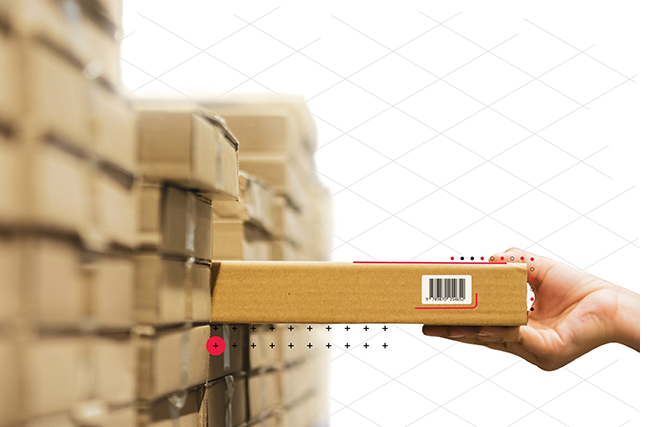
Benefits of WMS
Benefits of WMS

By automating product receiving and streamlining operations, a WMS ensures faster and more accurate completion of all tasks.

Warehouse personnel can perform all tasks using mobile devices to scan product barcodes.

The WMS intelligently allocates resources based on the expected volume of goods entering and leaving the warehouse.
Modern, fast and flexible warehouse
Warehouse planning
 Information about the internal structure of the warehouse is loaded into the WMS system zones with their respective purpose (collection, storage, control, storage of delayed goods, etc.). The program knows the location and purpose of each shelf, drawer, pallet, and space, which allows to plan the movement of goods correctly and optimally inside the warehouse.
Information about the internal structure of the warehouse is loaded into the WMS system zones with their respective purpose (collection, storage, control, storage of delayed goods, etc.). The program knows the location and purpose of each shelf, drawer, pallet, and space, which allows to plan the movement of goods correctly and optimally inside the warehouse.
Receiving Products

The WMS receives information about expected arrivals beforehand, including product details (type, quantity, weight, etc.).
Warehouse personnel utilize mobile devices to ensure accurate receiving quantities through physical measurement.
A multi-step receiving process may be implemented, where one employee's count is verified by another for enhanced accuracy.
The WMS can also facilitate quality checks during receiving, identifying good or defective items for appropriate handling based on company policy.
Batch numbers and expiration dates can be captured during receiving to enable batch accounting and deadline control within the warehouse.
Product Placement
 Following receipt, the system itself plans to place the goods in the appropriate space based on its parameters. When planning the location, it is possible to take into account the planning of the warehouse - what areas are intended for storage, as well as the size, weight, volume of the goods, the required temperature regime, the possibility of storage together with other goods, etc.
Following receipt, the system itself plans to place the goods in the appropriate space based on its parameters. When planning the location, it is possible to take into account the planning of the warehouse - what areas are intended for storage, as well as the size, weight, volume of the goods, the required temperature regime, the possibility of storage together with other goods, etc.
Product Picking
 Similar to receiving, the WMS receives advanced information about expected departures.
Similar to receiving, the WMS receives advanced information about expected departures.
The system itself generates tasks for the employees to collect the products to be sent. The collection process is also carried out on mobile devices, which ensures accuracy and minimizes the risk of incorrect quantities or products being delivered to the customer.
The system also takes into account product storage locations and plans the optimal collection route for the employee. After the collection is completed, it is also possible to have additional control of the quantity by another employee.
Inventory Management

Warehouse Management Systems (WMS) support both planned and unplanned inventory checks. Inventories can be conducted for specific products or designated warehouse areas. Importantly, the inventory process is designed to minimize disruption to ongoing warehouse operations and typically doesn't require a complete stoppage of activities. Mobile devices are used to capture inventory data, and final results must be confirmed by designated authorized personnel.
Integration with major accounting software
 WMS is not a standalone program and requires integration with the main accounting system. Accounting software provides the WMS with information on expected arrivals and departures (customer and supplier orders, internal movements), as well as various parameters of goods (size, weight, volume, expiration date, etc.). In response, the WMS returns information about the goods received and issued, as well as the results of the inventory, to the accounting system. This continuous data exchange ensures constant consistency of accounting data with the physical condition of the warehouse.
WMS is not a standalone program and requires integration with the main accounting system. Accounting software provides the WMS with information on expected arrivals and departures (customer and supplier orders, internal movements), as well as various parameters of goods (size, weight, volume, expiration date, etc.). In response, the WMS returns information about the goods received and issued, as well as the results of the inventory, to the accounting system. This continuous data exchange ensures constant consistency of accounting data with the physical condition of the warehouse.
Workforce Management and Resource Optimization

The WMS maintains data on available human resources and technical resources within the warehouse. This allows the system to consider resource availability when planning any warehouse operation.
The program also facilitates the implementation of incentive programs for warehouse employees. These programs can be based on measurable performance indicators, such as task completion time, daily processing volume, task accuracy, etc.
3PL Services Integration

Accounting for 3PL (warehouse rental and administration) services is supported in WMS. Balances can be managed across organizations. In addition, users of the space will have the opportunity to record expected arrivals and departures in theprogram. In such a case, it is not necessary to integrate the WMS with the accounting system of all customers.
It is also possible to calculate the cost of the services provided from the WMS itself, for which the report on the operations performed in terms of the month and the organization is used.
